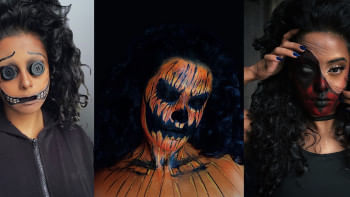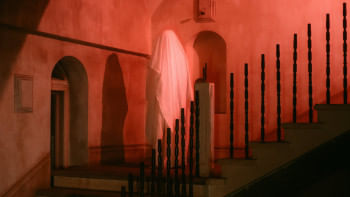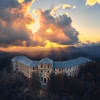Growing up in a Bengali household, your childhood nightly fears were probably shaped by the shakchunni in her blood-red saree or the petni lurking around the village pond. But ask today's children, and they are more likely to talk about haunted dolls and axe-wielding maniacs from the West.
So, does Hollywood's obsession with jump scares and slasher villains really have an edge over the terror of Bengali folklore, or are our homegrown spirits still more frightening than anything American pop culture has to offer?
One thing's for sure: grandpa and grandma are rolling their eyes in disbelief. For them, no ghost story — no matter what level of computer-generated imagery or creepy sound design has been used — can rival the subtle, bone-chilling, and stealthy horror of a shakchunni. After all, why would anyone fear a chainsaw-wielding, unappetisingly humanoid villain, when a mysterious nishi can whisper your name from the shadows and lure you into the unknown?
Let's be honest, nothing in a Hollywood blockbuster can come close to capturing the chill of seeing a saree-clad figure of a woman, standing on a rooftop.
Consider the Brahmadaitya too — ghostly Brahmin teachers who live in banyan trees, occasionally doling out advice or solving village disputes. Ever had Annabelle do that? Probably not. She's more interested in revenge or outright chaos. The Brahmadaitya is as terrifying as it is culturally significant; he could lecture you on the Holy Scriptures and scare the living daylights out of you.
Yet, the silent invasion of American horror into Bengali culture warrants a thought: are the petnis, mechho bhoots, and shakchunnis being elbowed out by the likes of Freddy Krueger and Chucky? There's no doubt that Hollywood has brought bigger budgets and global attention to the horror genre, but there's something hauntingly unsettling about Bengali ghosts.
Unlike American spirits with clear motivations and backstories, Bengali ghosts are unpredictable; they don't need much of a reason to haunt you, as long as you are in the wrong place, at the wrong time.
In a world of typical Hollywood haunts, Bengali ghosts are undeniably capricious. Maybe they're not as loud or obvious as the Western ones, but their USP lies in their mystery, lurking quietly in our folklore, waiting to terrify us in ways modern-day CGI-fed monsters never could.
So, whether you have got shakchunni chills, or you have crossed over to the other side completely, one thing's for sure; Bengali ghosts will always have an allure that's uniquely their own. And maybe, just maybe, they'll sneak back into our nightmares when we least expect it.











Comments